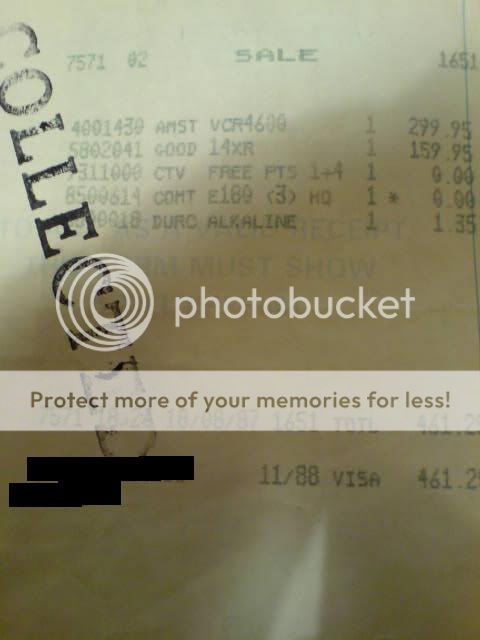Chuckie egg 
Now you're talking
Now you're talking
Research Machines ??, ZX80, ZX81, Dragon 32, Commodore PET, Atari's
but the BBC Model B's was in a different leaque, mines coming out the cupboard for Christmas.
Remember Rocket Raid, Defender and Chuckie Egg
I've just been tidying out my "Guarantees & Instructions" folder, chucking out all historic stuff.
The following is a bill for the (then) cheapest video & 14" TV. They're no longer with me, but they are still working today. The vid was an Amstrad 4600 & the TV a Goodmans. Total cost £461.25...incl. some batteries!
Anybody got any similar stories of longevity from cheap goods?


... programmers were worth their weight in gold...
They use calculators like thisI don't think I will ever understand how they did ANYTHING - build tall buildings, bridges, spaceships before the PC was born


... programmers were worth their weight in gold...
So fat programmers were more valuable than thin ones
Didn't Sir Clive say you could run a power station on a 1K ZX81 ? Hope they didn't upgrade it with the 16K "wobble-pack"
I don't think I will ever understand how they did ANYTHING - build tall buildings, bridges, spaceships before the PC was born
that was in the days of pride in your work and less hurry and more qualitytake a look at the west pier in brighton. Built by the victorians. all the steel piles are massivly over engineered, which is why they cant afford to take them down. When they did a survey on it they found that all the piles are perefectly aligned in both aixs with each other. Not bad when you consider that they were lined up from shore, and put into the chalk bed below by screwing them in with manpower!
This Discussion has diversified a little but it brought back a memory of an installation of a then State of the art Computer System in a Nuclear Power Station back in the 70's.
The Working Store (todays RAM) was 24K and physically about one cubic foot.
The Backing store (todays Hard Drive) was 640K and physically the size of two four draw filing cabinets.
This machine started the Power station and Nuclear reactors up from almost cold, then continued to control the whole of the Power Station including Electrical Output and Steam generation from the reactors, was also a comprehensive alarm and monitoring system with advanced alarm analysis which is still unrivalled in modern Computer based industrial control systems, and a complete Data Logger. And all of that with the memory so small as to be ridiculous in todays terms. That was the time when memory was extremly expensive and programmers were worth their weight in gold, having the ability to squeeze every last drop of performance from a memory which is smaller than that used in a wrist watch today.
Wish I wasn't so b****y old to be able to recall these thoughts.
